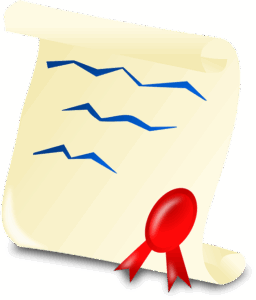Translation Services for UK SDS: Ensuring Compliance with Accurate Translations
Translation services for UK Safety Data Sheets (SDS) are vital to ensure compliance with stringent local regulations while maintaining global safety standards. Professional translators must balance linguistic precision with regulatory adherence, util…….
Translation services for UK Safety Data Sheets (SDS) are vital to ensure compliance with stringent local regulations while maintaining global safety standards. Professional translators must balance linguistic precision with regulatory adherence, utilizing appropriate terminology and formatting. This guarantees effective communication of critical safety data, enhancing risk management and compliance across diverse industries. Engaging specialized services ensures accurate translations, preserves content integrity, promotes a culture of safety, and facilitates seamless market access. Advanced technologies combined with human expertise streamline processes, reduce errors, and bridge the gap between evolving regulations for improved accessibility and cross-border trade.
In the dynamic landscape of chemical management, understanding UK Safety Data Sheet (SDS) regulations is paramount. As global businesses navigate the complex requirements of SDS translation, ensuring compliance across diverse markets becomes a critical challenge. This article explores the intricacies of translating SDS for the UK, highlighting key considerations, challenges, and best practices. From regulatory compliance to maintaining data consistency in different languages, discover how professional translation services can maximize efficiency and safeguard safety information.
- Understanding UK Safety Data Sheet (SDS) Regulations
- The Role of Accurate Translation in Compliance
- Key Considerations for SDS Translation Services
- Challenges in Translating SDS for the UK Market
- Ensuring Consistency Across Different Languages
- Best Practices for High-Quality SDS Translations
- Case Studies: Successful SDS Translation Strategies
- Future Trends in UK SDS Regulatory Landscape
- Conclusion: Maximizing Efficiency with Professional Translation
Understanding UK Safety Data Sheet (SDS) Regulations
The UK has specific regulations for Safety Data Sheets (SDS), which are crucial documents in ensuring the safe handling, storage, and disposal of chemical substances. These regulations are designed to provide clear and comprehensive information to help businesses and individuals manage potential risks associated with chemicals. When it comes to translating SDS for a UK audience, accuracy is paramount. Professional translation services play a vital role in ensuring that these documents meet the required standards and effectively communicate critical safety data.
Translation services for UK SDS must consider not only linguistic precision but also adherence to local regulations. This involves understanding the specific terminology and formatting preferences of the UK market while ensuring the content remains consistent with global safety standards. Effective translation helps ensure that workers, emergency responders, and other relevant parties can quickly access and interpret vital safety information, thereby enhancing overall risk management and compliance.
The Role of Accurate Translation in Compliance
The accuracy of translation services for UK Safety Data Sheets (SDS) is paramount in ensuring compliance with regulatory standards. SDS provide critical information about chemical substances, and any discrepancies or misinterpretations in their translations can lead to serious consequences, including safety hazards and legal repercussions. A professional translation service specializing in chemical documentation must therefore be engaged to guarantee that the translated SDS accurately convey the original content.
This is particularly important given the UK’s stringent health and safety regulations, which demand clear, precise communication of hazard identification, risk assessment, and safe handling procedures. Accurate translations enable workers across various industries to understand the potential risks associated with the chemicals they handle, use, or come into contact with, thereby fostering a culture of safety and adherence to regulatory guidelines.
Key Considerations for SDS Translation Services
When translating Safety Data Sheets (SDS) for a UK audience, several key considerations come into play to ensure compliance and accuracy. The process demands a deep understanding of both chemical hazards and the specific regulatory requirements set by the UK’s Health and Safety Executive (HSE). Professional translation services should have expert chemists or toxicologists on staff who are well-versed in these fields to handle technical terms and classifications accurately.
Furthermore, cultural nuances must be taken into account to convey complex safety information effectively. This includes adapting language for different reading levels while maintaining clarity and consistency across all SDS documents. Reputable translation services should follow recognized standards like ISO 10278 for chemical classification and labeling, ensuring that the translated SDS are not only compliant but also easily understandable by UK professionals and end-users.
Challenges in Translating SDS for the UK Market
Translating Safety Data Sheets (SDS) for the UK market presents several challenges, especially for companies operating globally or those new to the region. One of the primary hurdles is understanding and adhering to the unique regulatory requirements set by the UK Health and Safety Executive (HSE). The HSE has specific guidelines on the format, content, and language of SDS, which can differ significantly from other countries.
Translation services for UK SDS must not only accurately convey the technical information but also ensure compliance with these stringent rules. This includes translating chemical names, symbols, and hazards using standardized terminology recognized by the HSE. Accurate translations are crucial to prevent misinterpretation or miscommunication that could impact workplace safety.
Ensuring Consistency Across Different Languages
When translating Safety Data Sheets (SDS) for the UK market, maintaining consistency across different languages is paramount. SDS are regulatory documents that provide critical information about chemical hazards and safe handling practices. As such, accurate translations must convey the same level of detail and clarity in every language. This ensures that users across diverse linguistic backgrounds can rely on the SDS for their safety.
Translation services play a pivotal role in achieving this consistency. Professional translators with expertise in chemical terminology and regulatory compliance are essential. They not only translate words but also adapt the content to fit cultural nuances while adhering to UK-specific regulations. This careful approach guarantees that the translated SDS accurately reflect the original intent, ensuring users receive uniform and reliable safety information regardless of their language preference.
Best Practices for High-Quality SDS Translations
When translating Safety Data Sheets (SDS) for a UK audience, accuracy and compliance are paramount. High-quality translations require more than just word-for-word substitution; they demand an understanding of regulatory nuances and industry terminology specific to the UK market. To ensure your SDS translations are effective, consider these best practices:
First, engage professional translation services with expertise in chemical safety documentation. These services should have a deep knowledge of both the source language and UK regulations, such as the REACH (Registration, Evaluation, Authorisation and Restriction of Chemicals) legislation. Next, maintain consistency in terminology throughout the translation to avoid confusion. Use approved glossaries and databases specific to the industry to ensure that technical terms are accurately conveyed across languages. Lastly, proofread and edit translations meticulously to catch any potential errors or discrepancies.
Case Studies: Successful SDS Translation Strategies
Case Studies: Successful SDS Translation Strategies
In today’s globalized market, ensuring that your Safety Data Sheets (SDS) are accurately translated for UK regulators is paramount. Several case studies highlight successful translation strategies that have navigated this complex process smoothly. One prominent example involves a multinational chemical company that partnered with specialized translation services to localize their SDS in line with the UK’s Classification, Labelling and Packaging (CLP) regulations. This collaboration involved not just linguistic proficiency but also an understanding of hazardous substance classification and safety protocols, ensuring compliance from day one.
Another successful story comes from a pharmaceutical firm that implemented a comprehensive SDS translation process. They utilized advanced translation management systems to streamline the workflow, maintain terminological consistency, and guarantee accuracy. By involving industry experts in the review process, they could confirm that the translated SDS were not only linguistically correct but also technically sound, thereby facilitating smooth approval by UK health and safety authorities. These examples underscore the significance of professional translation services for UK SDS, ensuring compliance, efficiency, and risk minimization.
Future Trends in UK SDS Regulatory Landscape
The UK SDS regulatory landscape is continually evolving, influenced by global trends and the need to adapt to changing chemical safety standards. One prominent future trend is the increasing emphasis on digitalization and standardization. The European Union’s REACH Regulation (Registration, Evaluation, Authorisation, and Restriction of Chemicals) has already paved the way for more efficient data management and sharing, and the UK is likely to follow suit. This shift towards digital SDS will not only improve accessibility but also facilitate cross-border trade by ensuring consistent safety information across Europe.
Translation services for UK Safety Data Sheets will play a crucial role in this transition. As regulatory requirements become more uniform across the EU, accurate and reliable translation will be essential to ensure that safety data is accessible and understandable for all stakeholders, including regulators, manufacturers, and end-users. Advanced translation technologies, coupled with human expertise, can help streamline the process, reduce errors, and provide up-to-date interpretations of complex chemical information, thereby facilitating a smoother transition to the future of UK SDS regulation.
Conclusion: Maximizing Efficiency with Professional Translation
In today’s global business landscape, ensuring clear and accurate communication is paramount, especially when dealing with critical documents like Safety Data Sheets (SDS). Translation services for UK SDS play a pivotal role in facilitating compliance and maximizing efficiency. Professional translation ensures that safety information reaches all stakeholders in their native language, without losing integrity or precision. This is essential given the diverse linguistic makeup of the UK and the potential legal implications of miscommunication.
By leveraging expert translators familiar with both regulatory requirements and industry-specific terminology, organizations can streamline their SDS documentation process. Professional translation services not only save time but also reduce the risk of errors that could lead to costly delays or non-compliance issues. As a result, businesses can focus on their core operations while ensuring that their UK market entry or expansion is seamless and legally sound.
In conclusion, navigating the UK SDS regulatory landscape requires a deep understanding of local requirements and precise translation services. By implementing best practices, ensuring consistency across languages, and leveraging case studies as guides, organizations can maximize efficiency and maintain compliance. Choosing professional translation services specialized in UK SDS regulations is pivotal to achieving accuracy and avoiding potential pitfalls, ultimately facilitating smoother operations within the dynamic UK market.



